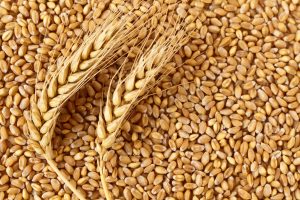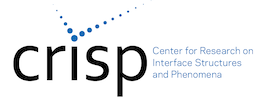Our kits are currently being reviewed and updated by a team of collaborative, innovative and interdisciplinary educators who wish to enhance the educational opportunities for students. These dedicated teachers are members of CRISP Collaborative Science for All (CCSA) as well as local educators.
Click to see the SCSU CRISP Module Template used by CCSA for improving and updating the CRISP demos and kits. Each kit page offers a CRISP developed teacher module and CRISP aligned standards (both NGSS and CCSS)
Kit Request form

Wheat germ is the part of the seed that contains the plant’s genetic material. Farmers have selectively bred wheat over thousands of years to produce larger, more nutritious kernels.
The ability to modify and build using DNA is essential to synthetic biology. All plant and animal cells contain deoxyribonucleic acid, or DNA, the building block of life. DNA helps cells grow and do different jobs. Researchers are already very good at identifying and isolating specific sections, or sequences, of DNA that correspond to different funtions. Synthetic (human-made) DNA can even be printed using a special printer! Using tools from genetics and biology, scientists and engineers can mix and match pieces of DNA to “program” living systems in a way that is kind of like computer programming. This allows researchers to modify or build new living organisms and materials
Adapted from Building with Biology Toolkits originally created for NISEnet via the Building with Biology project
This material is based upon work supported by the National Science Foundation under Grant Number DRL 1421179. Any opinions, findings, and conclusions expressed in this material are those of the authors and do not necessarily reflect the views of the National Science Foundation.
Subject(s):
Synthetic Biology, Biotechnology
Objectives:
- Synthetic biology develops tools and knowledge to build new living organisms and materials.
- The ability to modify and build using DNA is essential to synthetic biology.
- Synthetic biology benefits from many different voices.
Materials in this kit:
Preparation
- Ice pack
- Raw wheat germ (not processed)
- Hot water
- Meat tenderizer
- Shampoo (or dish washing detergent)
- Plastic spoon
- Isopropyl alcohol or ethyl alcohol (91%)
- Plastic container
- Dropper bottle
Activity
- Cup of wheat germ liquid
- Dropper bottle of alcohol
- 5 ml microcentrifuge tubes
- 1 ml pipettes
- Yarn
- Scissors
Reference Sheets: Synthetic Biology & Genes and DNA
Suggestions for the Teacher:
- Students should have foundational knowledge of cell structure and DNA structure and function. The module activity will build upon these frameworks with hands-on applications.
Safety:
- Do not ingest/consume any activity materials.
- Exercise caution while using scissors.
Additional Resources:
BwB Facilitators Guide ⇒ Check out Activity Preparation here!!
See DNA teacher module
BwB DNA Activity Guide
DNA CRISP aligned standards
BwB Genes and DNA Reference
Genetic Engineering Reference
Traditional Agricultural Breeding Reference
Synthetic Biology Reference
STEM Careers:
Bioengineer
Biologist
Biochemist
Geneticist
Medical Device Designer
Pharmacist
Physician
Quality Control/Quality Assurance Technician
Research Scientist
Synthetic Biologist
Standards:
MS-LS1-1: From Molecules to Organisms: Structures and Processes
- Conduct an investigation to provide evidence that living things are made of cells; either one cell or many different numbers and types of cells.
HS-LS1-1 From Molecules to Organisms: Structures and Processes
- Construct an explanation based on evidence for how the structure of DNA determines the structure of proteins which carry out the essential functions of life through systems of specialized cells.
MS - LS1.A: Structure and Function
All living things are made up of cells, which is the smallest unit that can be said to be alive. An organism may consist of one single cell (unicellular) or many different numbers and types of cells (multicellular).
HS - LS1.A: Structure and Function
Systems of specialized cells within organisms help them perform the essential functions of life.
All cells contain genetic information in the form of DNA molecules. Genes are regions in the DNA that contain the instructions that code for the formation of proteins, which carry out most of the work of cells.
CC 3 - Scale, Proportion, and Quantity
- Phenomena that can be observed at one scale may not be observable at another scale.
CC 6 - Structure and Function
- Investigating or designing new systems or structures requires a detailed examination of the properties of different materials, the structures of different components, and connections of components to reveal its function and/or solve a problem.
Interdependence of Science, Engineering, and Technology
- Engineering advances have led to important discoveries in virtually every field of science, and scientific discoveries have led to the development of entire industries and engineered systems.
SEP 3 - Planning and Carrying out Investigations
- Conduct an investigation to produce data to serve as the basis for evidence that meet the goals of an investigation.
SEP 5 - Constructing explanations (for science) and designing solutions (for engineering)
- Construct an explanation based on valid and reliable evidence obtained from a variety of sources (including students’ own investigations, models, theories, simulations, peer review) and the assumption that theories and laws that describe the natural world operate today as they did in the past and will continue to do so in the future.
